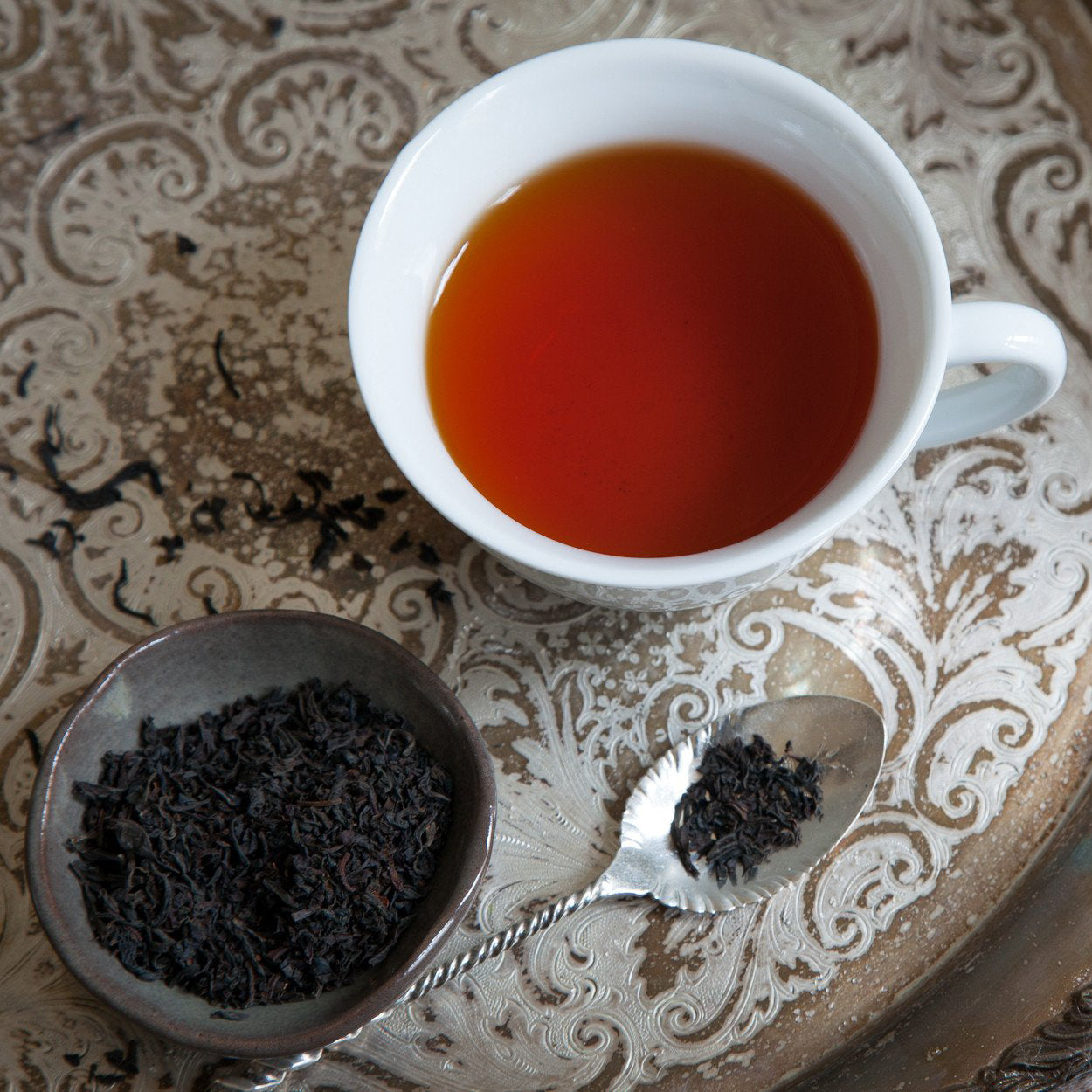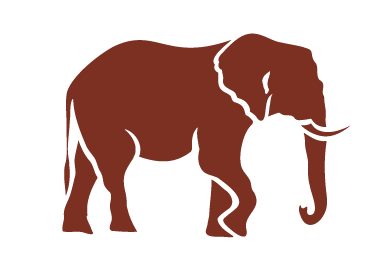
The World is in Love with Black Tea
In a world of almost 8 billion people, we drink a staggering 6 billion cups of tea every single day! Try to find a person without some kind of a personal connection to tea. It’s not easy. In North America, we drink it iced, sweet, in our grandmother’s kitchens, at tea parties and for breakfast and almost 100% of the tea we drink is what we know as black tea.
__________________________________________________________________________________________
What is Black Tea?
Black tea is, in the British tradition, the fully oxidized leaf of the Camellia sinensis plant. The oxidized leaf, when steeped, produces a tannic, strong and red colored cup that holds up well to milk and sugar. Since the days of the East India Trading Company, the Brits have loved black tea for its strong, tannic taste and its uplifting energy.
__________________________________________________________________________________________
Differences Between Black, Green and Oolong Tea
There are a number of factors that differentiate black tea from green tea, white tea, oolong tea and puerh tea. Namely, processing technique, cultivar and origin.
Green Tea: Whereas black tea is made by rolling the tea leaves and then allowing oxidation to bring out tannins, a dark color and that “black tea” taste, green tea is not allowed to oxidize. Oxidation brings out flavors in the leaf that range from malt to baked fruit to freshly chopped wood depending on the inherent flavor in the tea leaf, the origin and the processing technique used.
When making green tea, tea masters encourage delicate flavors and potent essential oils to remain in the leaf. They are purposefully sealed in by either steaming the leaves or searing them in a hot wok-like pan. Tea that is destined to become green tea is grown and processed in order to maintain the ephemeral, fresh notes that green tea is so loved for.
Oolong Tea: The main differentiators between black tea and the coveted oolong teas of the East are cultivar and origin. Oolongs are specific to the places where they are from—and the specific tea plants that have grown there over time. For example, in Anxi, people have, for generations, been growing and processing the Tieguan Yin or Iron Goddess of Mercy cultivar tea plant. The processing techniques that create what we now know as Iron Goddess of Mercy oolong tea came about in order to coax the most flavor from this specific leaf in this specific environment. The same goes for oolongs from Wuyi, Phoenix Mountain and Taiwan.__________________________________________________________________________________________
Is Black Tea Really Red Tea?
Not to confuse you, but did you know that black tea is actually, more appropriately, called red tea? The reason is that in China, for thousands of years before the British discovered their beloved “black tea”, people were drinking fully oxidized tea leaves that they called "red tea". It does make a red cup of tea, so the name makes sense. The British called this kind of tea black tea and so across the Western world, red tea is now known as black tea. Although it is more widely known now as black tea, the problem with this is that it disregards the people, cultures and places that birthed black tea.
To make it even more confusing, in China, black tea is the name for what we, in the West, call “dark tea”. Black tea is actually a post fermented tea that is often aged, like Liu Bao or Shou Puerh. When the British took the name black tea for what was traditionally called red tea, it erased, in the English language, the entire category of this amazing, ancient, healthful tea! Today, in the United States, most people have not ever heard of this category of tea which is unfortunate because there is so much health and wellness to be gained from it.
__________________________________________________________________________________________
What Do We Call Black Tea?
At Firepot, when we say black tea, we are talking about fully oxidized tea in the British Breakfast tradition. For example, our Italian Grey, Firepot Breakfast and Music City Morning are classic breakfast teas that fall under this category.
When we are talking about Chinese or Taiwanese fully oxidized teas, we call them red teas.
If we are talking about a traditional black tea, a post-fermented tea like our Shou Puerh, then we just call it puerh or liu bao or whatever its specific name is!
__________________________________________________________________________________________
A Quick History of British Black Tea
Once the European explorers in China discovered fully fermented tea in the 1600ds, they quickly fell in love and began to sell it across Europe. By the 1800ds, the British had begun to cultivate tea in their colony, India, and indigenous tea leaves were discovered growing in Assam, India. The East India Trading Company was set up to cultivate, process and distribute tea across Europe and to break the Chinese monopoly on tea. Eventually, black tea made its way to America.
The new Americans resisted tea and its cultural and financial ties to England and famously threw a cargo ship’s worth of tea overboard in the Boston Harbour in 1773. However, Americans continued drinking black tea in iced tea and tea bags, both introduced to the mainstream at the St. Louis World Fair in 1904. The American iced tea and Southern American sweet iced tea cultures developed from these inventions and even today, 90% of what we drink in the US is black tea in teabags or iced tea.
__________________________________________________________________________________________
Types of Black Tea You Need to Know:
Assam: In Assam, a region in the northeastern corner of India, an indigenous, big leaf variety of tea grows at low elevations along the Brahmaputra River. Black tea from here is known to be malty, strong bodied and full of flavor. You will find it in chai and breakfast teas and also drunk straight.
Ceylon: Ceylon is the old name for Sri Lanka, where tea was planted to replace the dying coffee industry in the late 1800ds. Ceylon tea is known to be full flavored with citrusy notes and to be a great self drinker. It also can be drunk with milk and sugar, especially when drunk as a Breakfast tea.
Darjeeling: A small region in the foothills of the Himalayan Mountains, Darjeeling is a beautiful region where tea grows slowly at high elevations. Tea here is light liquoring and produces a golden colored cup. It is the “champagne of tea” and is renowned for floral and muscatel notes. It is rarely drink with milk, but sometimes with some honey or sugar.
Earl Grey: A gift from a Chinese tea merchant to Earl Grey, a British Prime Minister, this famous black tea blends Italian bergamot oil with Ceylon black tea. It is the ultimate story of international trade and a familiar morning tea drink alone or with milk and sugar.
Chai: A boiled tea from the local people of India, chai, which just means “tea” in India, is a blend of black Indian tea with sweet and warming tropical spices like cardamom, cinnamon, cloves, black pepper and ginger. It is cooked with milk and sugar and served in small cups. Chai, in the West, is known as a flavor in and of itself and commonly found in coffee shops and also as an ingredient in ice cream, beer, baked goods and candy.
Lapsang Souchong: This was the first fully oxidized, or red tea, in China. It is known for its smoky flavor because it is typically, but not always, smoked over pinewood. It hails from Wuyi, China and is made of larger leaves lower down the tea plant that are less flavorful and delicate as those closer to the bud. It is fantastic as an ingredient and blended with Earl Grey for a unique breakfast tea.
Keemun: A relatively modern fully oxidized red tea from Anhui, China, Keemun is typically found in British breakfast blends. It has a sweet and delicious taste of stone fruit and orchid and is well loved the world over. It can hold milk and sugar well and also be drink straight.
Dian Hong: A fully oxidized red tea (‘Hongcha”) from Yunnan (“Dian”), Dian Hong is sold with names like Golden Lily, Golden Snail, Golden Needles and Golden Monkey because it typically is produced with a large amount of yellow buds. It is a rare and well loved tea drunk without milk and sugar.
__________________________________________________________________________________________
Click Here to Shop Our Black Teas
READ NEXT: What is Chai Tea?
